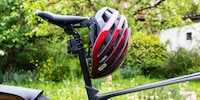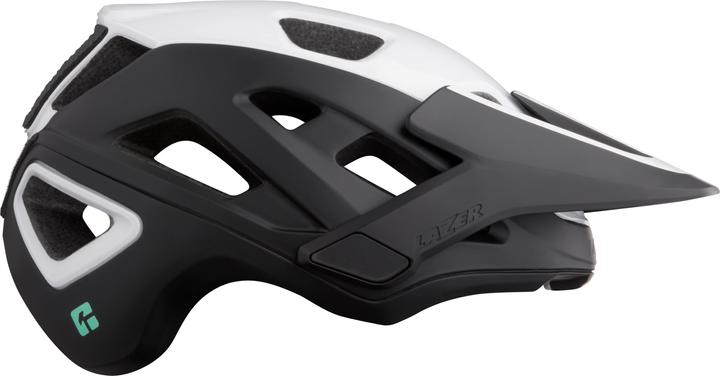

Ten years of development and «controlled crumple zones» have gone into Lazer’s new bike helmet.
«KinetiCore» is the name of Lazer’s latest technology. It’s a safety system designed to protect you against head injuries in the event of a collision. Ten years of development have gone into the new bike helmet made by Belgium-based company Lazer.
The bicycle helmet manufacturer invested lots of time in the new «KinetiCore» safety technology, drawing inspiration from the automobile industry. Crumple zones of vehicles being one of the main focuses of Lazer’s engineers. This led to the incorporation of cone-shaped pieces of foam on the inside of the helmet, which deform or even break in the event of an impact. This directs the kinetic energy away from the cyclist’s head. The Belgian company refers to these areas as «controlled crumple zones»: a structure made of EPS foam blocks that are built into the helmet. The abbreviation EPS stands for expanded polystyrene and describes a plastic mainly known under the brand name Styrofoam. Lazer invested ten years in the development of this new technology.
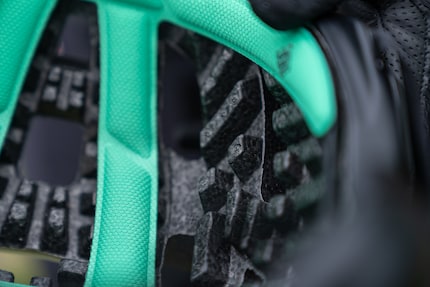
According to the manufacturer, it provides good protection against the effects of direct and rotating forces. To achieve this protection, Lazer developed various prototypes, ran computer simulations and tested around 5,000 real helmets. Finally, they settled on a design with the necessary protection and absorption capacity for the impact energy.
Light and breezy
The manufacturer states that «KinetiCore», unlike other technologies, provides built-in protection against rotational forces. The helmet is also said to have a positive effect on the ventilation and weight of the helmet. Cool air enters through the front, warm air is discharged through the openings in the back. This should increase comfort and make the ride more pleasant.
To reduce the overall weight, Lazer has put many years of work into reducing the amount of plastic and EPS foam needed for the helmet. This helped them reduce additional weight. At 340 grammes, the «Jackal» is 50 grammes lighter than the model with Mips, which Lazer still has in its range. Compared to Endura’s MT500 with Koroyd technology, however, the difference is only 10 grammes. That’s at least something.
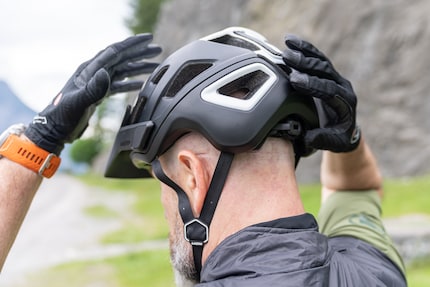
Different manufacturers, different technologies: While Giro relies on Mips or the advanced Spherical technology for its helmets and Endura uses both Koroyd and Mips, Lazer has now thrown KinetiCore into the mix. So far, the new technology has been incorporated into five models.
First impressions: everything a state-of-the-art helmet needs
I spent a few days in Schruns in the region of Vorarlberg for a piece about trail building in Austria. There, I took the opportunity to get a first impression of the new Lazer helmet and hit the road with the MTB model «Jackal».
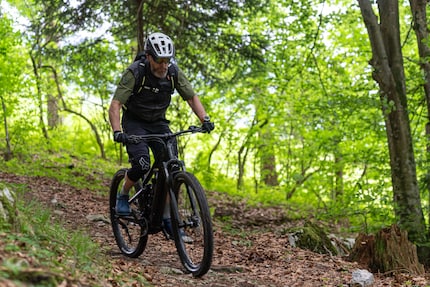

Lazer’s «Jackal» provides everything you could want from a modern MTB helmet. For one, it complies with the mandatory European standard EN1078. The magnetic buckle is easy to close and open even if you’re wearing gloves. Bye-bye frustrating fumbling! The visor is adjustable upwards and downwards, thereby creating plenty of room for your cycling goggles or glasses. The goggle mount at the back prevents your eyewear from slipping. With the action camera mount, you can attach your GoPro, for example. And it’s also compatible with the Lazer LED. However, the tail light isn’t included.
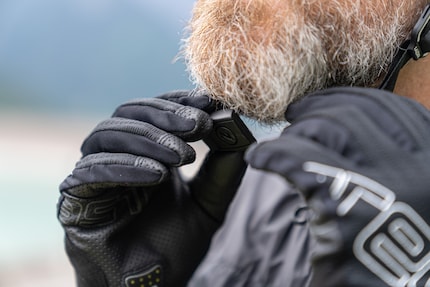
After covering my first few kilometres on trails and forest paths, I’m happy with this helmet. The «Jackal» is a comfy and light fit, and is also easily adjustable both horizontally and vertically. Overall, ventilation is good, but not significantly better than other helmets I’ve worn. For Lazer, it certainly makes sense to free itself from any dependencies on suppliers such as Mips by coming up with its own «KinetiCore» technology. For me as a consumer, the type of safety technology that’s being used plays a secondary role as long as it protects me as well as possible in the case of a crash. And naturally, that’s what I expect when I’m using this helmet.
Speaking of trail building
As mentioned earlier, Galaxus was given the opportunity to accompany a Swiss trail building company at work in Vorarlberg, Austria. Watch this space for in-depth articles, background information and a report including video footage from the construction sites.
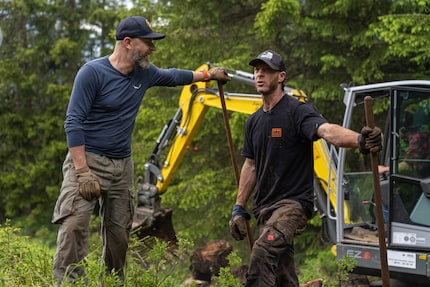
Don’t want to miss out? Click here to follow me and stay up to date with all things trail building.
From radio journalist to product tester and storyteller, jogger to gravel bike novice and fitness enthusiast with barbells and dumbbells. I'm excited to see where the journey'll take me next.
